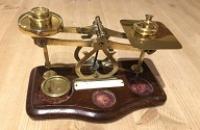Using everyday language to talk about size
Exploring characteristics of objects and using mathematical language to describe them





Children often enjoy making things out of thin card, pretending they've made worms, snakes, caterpillars, lizards etc.
Adults could provide craft materials for children to decorate, or other materials like linking cubes to make long narrow shapes.
The Activity
Provide thin card, that is long and narrow, for children to fold in different ways to make creatures that vary in length. Linking cubes, pipe cleaners etc. could also be used.
Encouraging mathematical thinking and reasoning:
Describing
Tell me about the long creature that you've made.
How does yours compare to the others that your friends have made?
Reasoning
Tell me about making it longer/shorter.
If you were to put yours with other ones what could you say about them?
Opening Out
Can you find a way of making it longer/shorter than any of the others?
Have a look at everyone's creatures. Could you group them in some way?
Recording
Do you want to make a label for your creature and give it a name?
How could you show how long your creature is?
The Mathematical Journey
Properties of shapes:
- discovering the best shapes to use by analysing their properties
Position and spatial properties:
- investigating how all the creatures that they make can be extended
- comparing the positions of creatures
Same and different:
- comparing the shapes and sizes of all the creatures that they make, in particular describing relative lengths i.e. comparing their creature's length before and after extension and/or comparing the length of their creature with another child's
- developing language to compare and contrast the shape/size of their creatures with others' e.g. longer, shorter, thicker, thinner...
Development and Variation

Similar mathematical discussions could arise from play with modelling clay, play-dough or plasticine, for example.
Children might also enjoy using ribbon/wool/string to go around different objects and realising the need for it to be longer.
Similarly, children could be given presents and wrapping paper. This may provoke discussions about the size of the piece of paper in relation to the size of the present (see the activity Wrapping Parcels).
Resources
You will already have lots of materials in your setting which would lend themselves to this activity. You might provide:
- materials which have the potential for creating long creatures, and perhaps are able to be decorated
- fabrics or other items that can be stretched or made shorter
A camera may be useful to take photos of the creatures.
Download a PDF of this resource.

